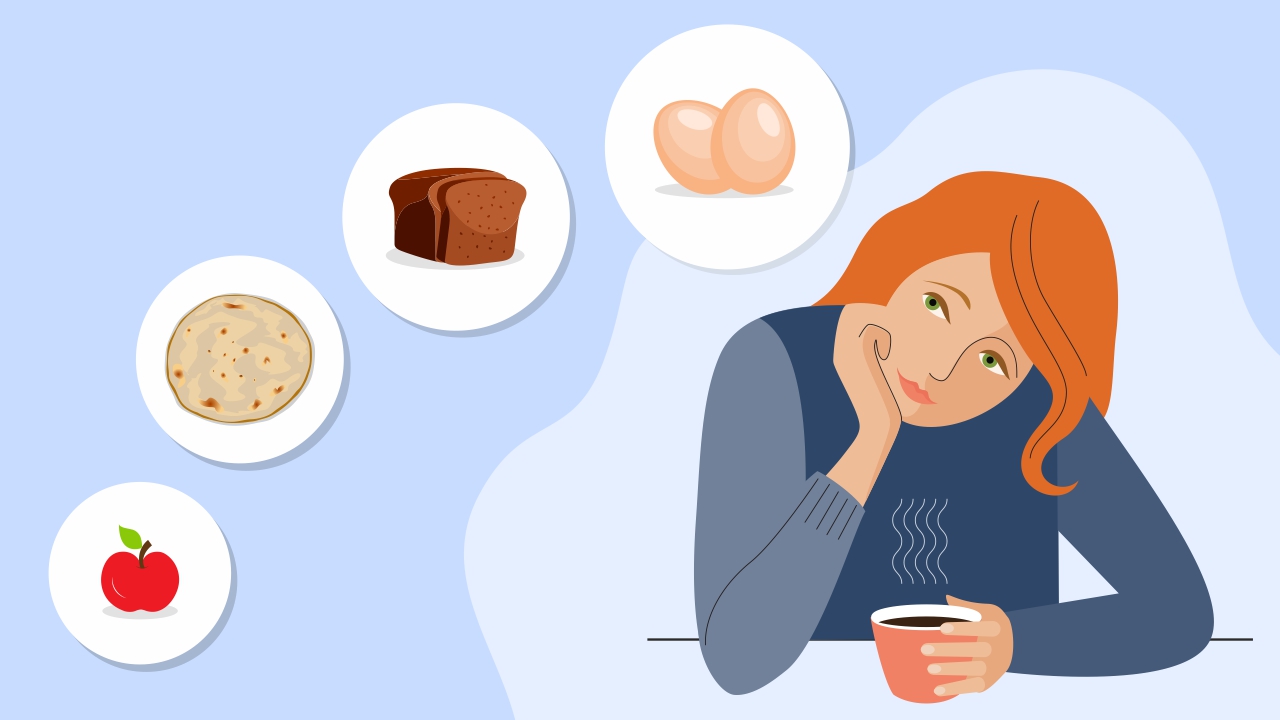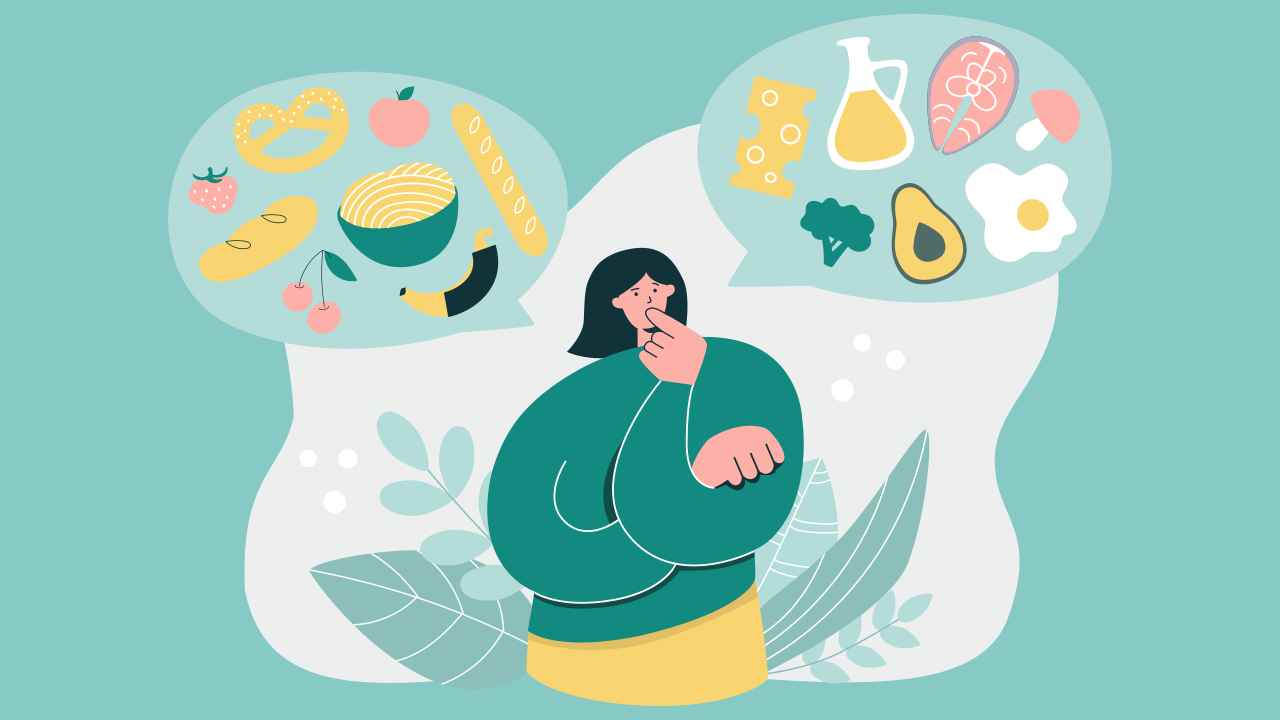
Portion Control: Get Smart About How Much You Eat
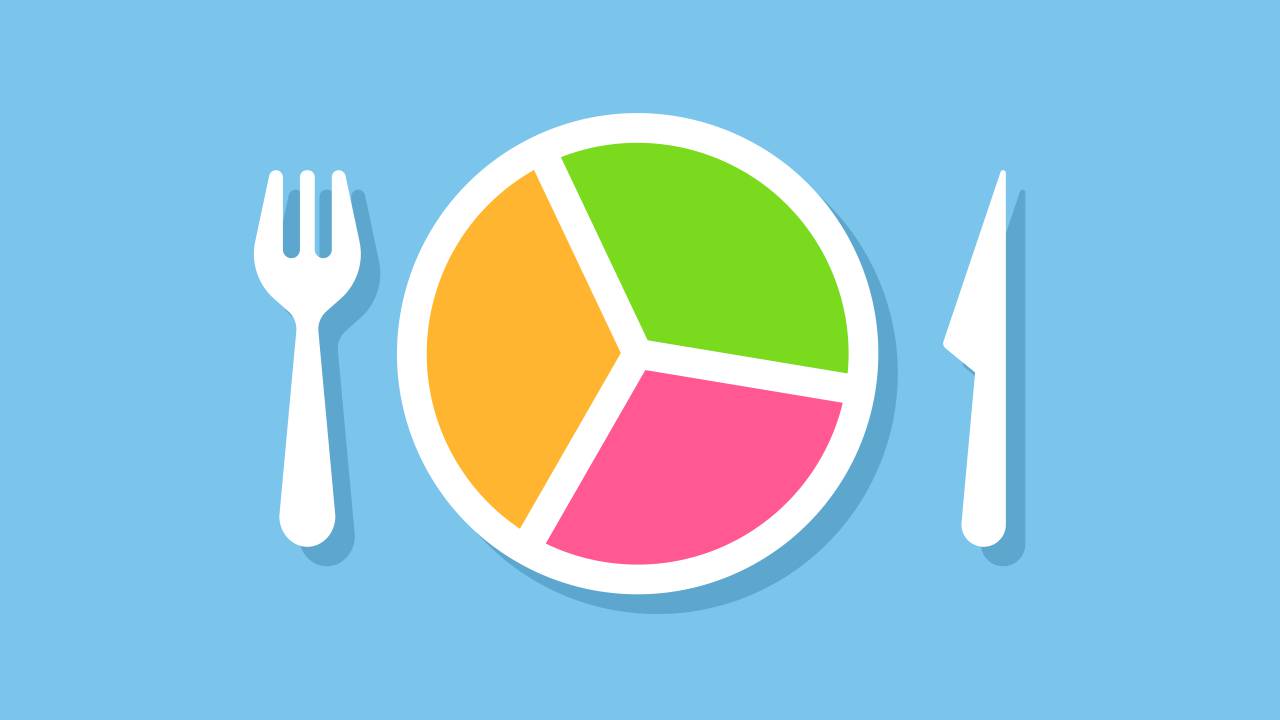
Portion size refers to the amount of food you eat at a time. Research shows that portion sizes of various foods have been increasing over the last 30 years, indirectly imposing significant risk of obesity and diseases like type-2 diabetes. It’s important therefore, to be careful about not just what you eat, but also how much of it you eat. Controlling portions or the quantity of food helps follow health goals and avoid lifestyle diseases.
How does portion control help?
Portion control is the technique of choosing the right portion sizes that contribute to your overall health. This concept may be applied to homemade, processed, packaged, as well as restaurant foods. Here is how you may benefit:
- It helps eliminate the tendency to overeat
- Digestion may become easier as the stomach is not overloaded with too much food at once
- Keeps a tab on your macronutrient (carbohydrates, protein, fat) intake, ensuring you do not consume excess of either
- Right balance of carbohydrates, proteins and fats will optimize actions of digestive enzymes, and hormones like insulin. This may lead to the proper regulation of metabolic activities in your body
Using portion control to reduce calorie/ energy intake
If you consume micronutrients–rich foods with low energy density, portion reduction may aid in lowering your daily energy intake. Energy density is the amount of calories or energy packed in one gram of that food. Fruits are great examples of these — they pack in lesser calories and have more nutrients for a portion size.
What if you don’t control portions?
Increased portion sizes bring remarkable changes to eating behavior. Larger portion sizes lead to sustained increase in the consumption of food, which further increases the calorie/ energy intake. It leads to unnecessary calories, which are stored in the body as fat, and manifesting on the waistline, hips, and belly, if they are not balanced with physical activity. Gradually, this may lead to obesity, type-2 diabetes, heart diseases, and hormonal imbalances.
Portion control at home
Here are some simple tricks that you may apply to learn the art of portion control when you are eating at home.
1. Drink water before your meals
Drinking water may help promote a feeling of fullness. Research suggests that drinking water prior to mealtime may help support weight-loss goals by increasing satiety, and thereby lowering energy consumption from the meal.
2. Portioning food using your hands
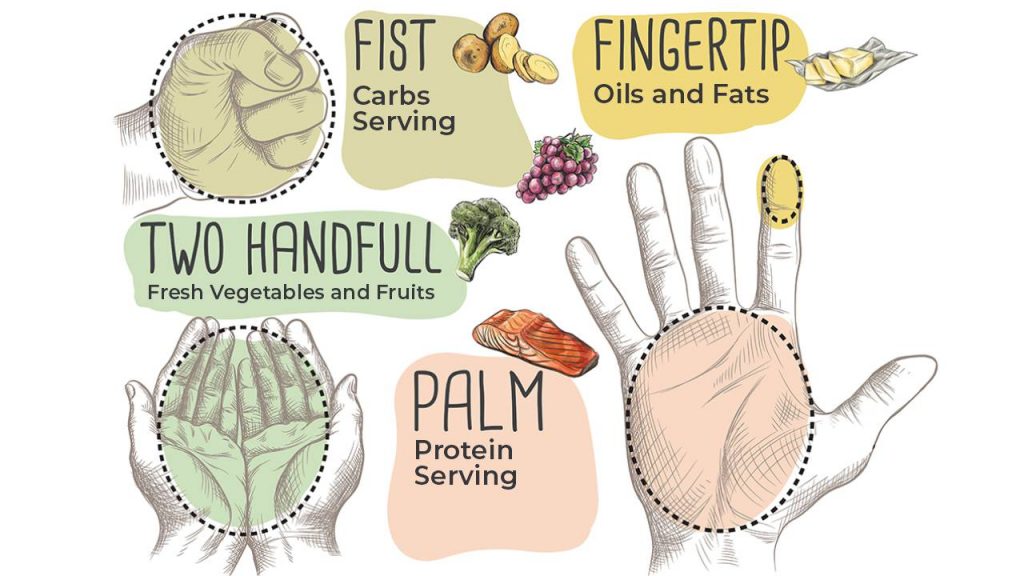
Your hand can act as a guide to approximate portion sizes. Check out this estimate for moderately active individuals.
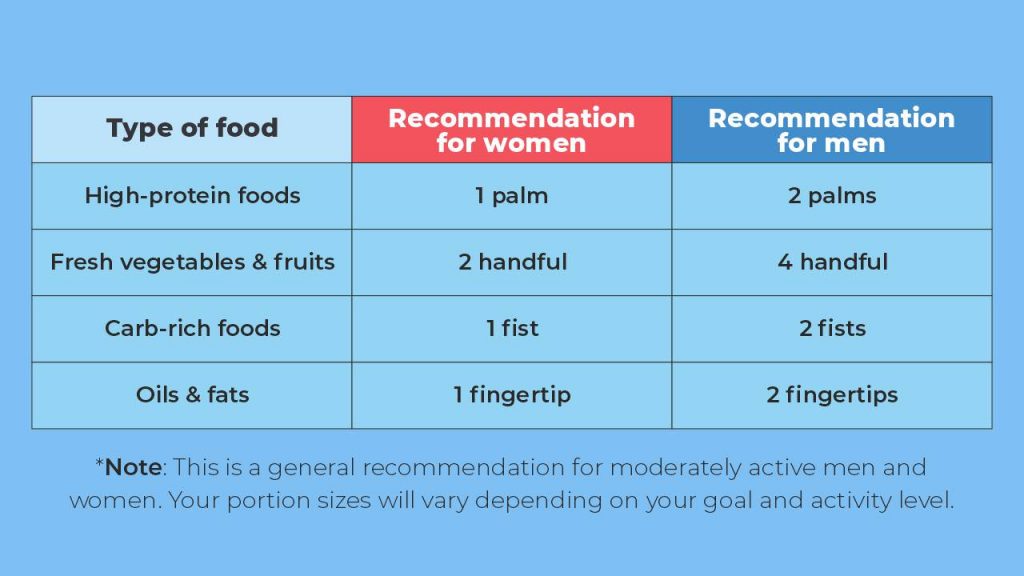
*Note: This is a general recommendation for moderately active men and women. Your portion sizes will vary depending on your goal and activity level.
3. Divide and rule
It’s important to remember that portion control shouldn’t come with the sacrifice of sound nutrition. Here’s a guide, which shows how you may divide the portions for various food groups:
1. Vegetables, fruits, salads – ½ plate
2. Carb-rich foods, eg, whole grains like whole wheat, rice, millets; starchy vegetables like potato and yam – ¼ plate
3. Protein-rich foods like fish, meat, lentils – ¼ plate
4. Fat-rich foods like nuts, oilseeds, butter – ½ – 1 teaspoon
4. Avoid consuming from the container
It is difficult to keep track of portions when you eat your food directly from large–sized packets and containers. This may encourage overeating. Re-portion your food by serving the desired portion in a small serving plate or bowl.
5. Pay attention to your meal
Being aware of what you eat, and eating slowly may help you be more conscious of your eating behaviours. This is also known as mindful eating. The stomach takes 20 minutes to send a signal to the brain that you are full. Thus, eating slowly might naturally help you refrain from overconsumption.
6. Keep a food diary
Research shows that the people, who choose to note their daily food and beverage intake, may efficiently control their portion sizes. You may try this technique and analyze your consumption on a daily basis to figure out the gaps in portion control.
Portion control while eating out
Here are some quick ways to control portions if you choose to eat out occasionally:
1. Share your meal: As restaurants generally serve larger portion sizes, sharing them with your friends or family may reduce food wastage and help you control portions.
2. Say yes to salad: Start your meal with a bowl of salad — vegetables tend to give you a feeling of satiety due to their fluid and fiber content. This helps you control the portions of your calorie-dense main meal.
3. Customize your orders: Some restaurants offer the option of customizing the portion size of your meals. You may order half a portion of your dish or ask for it to be prepared in less oil. Additionally, you can also ask for sauces to be served on the side, most sauces contain some amount of sugar and sodium in order to enhance taste, these can lead to intake of excess unwanted calories. Therefore ordering it separately will ensure you only add as much as you need.
Portion control is a scientific technique, which may help you define correct portion sizes of food for sustained health. Small steps go a long way to making smart dietary choices, which in turn, will help you live a healthy life.
References
1. Rolls BJ, Roe LS, Meengs JS. Reductions in portion size and energy density of foods are additive and lead to sustained decreases in energy intake 1 – 3. 2006.
2. Jeffery RW, Rydell S, Dunn CL, et al. Effects of portion size on chronic energy intake. 2007; 5: 2–6.
3. Technical WHO, Series R. e-Library of Evidence for Nutrition Actions ( eLENA ) Limiting portion sizes to reduce the risk of childhood overweight and obesity. 2021; 916: 2–5.
4. Hughes JW, Goldstein CM, Logan C, et al. Controlled testing of novel portion control plate produces smaller self-selected portion sizes compared to regular dinner plate. 2017 : 1–8.
5. Dennis EA, Dengo AL, Comber DL, Flack KD, Savla J, Davy KP, and Davy BM. Water Consumption Increases Weight Loss During a Hypocaloric Diet Intervention in Middle-aged and Older adults. Obesity (Silver Spring). 2010; 18(2): 300–307.




